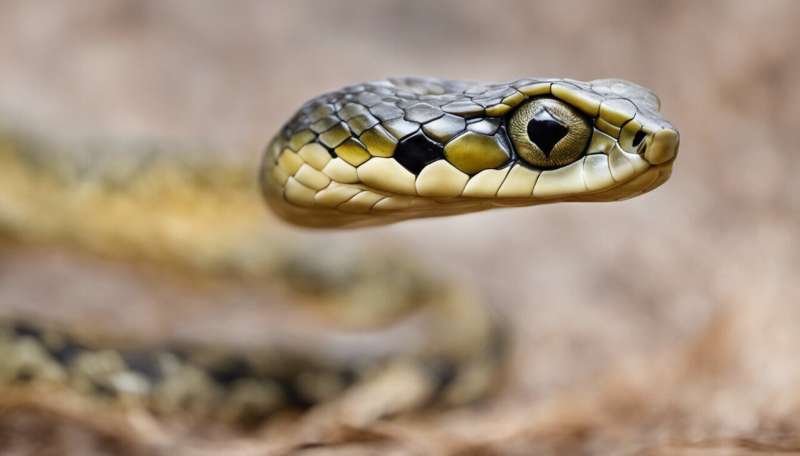Why can't snakes blink?

Spoiler alert: if you ever find yourself engaged in a staring contest with a snake, you'll lose.
"Because snakes don't have eyelids, they cannot blink," explains Bruno Simões, a researcher at the University of Plymouth in the United Kingdom. Simões has been studying the evolution of snake eyes for 10 years. "Every evolutionary step is reflected in an animal's vision," he says. "So, the best way to understand how and why snakes evolved the way they have is to look them in the eyes."
While today's snakes may lack eyelids, what they do have is a transparent scale that is called a brille. Essentially a modified version of the scales found on the rest of the snake's body, the brille acts similarly to an eyelid, protecting the eye and keeping it relatively moist. But, unlike an eyelid, a snake regularly sheds the brille along with the rest of its scales.
An unblinking eye for non-stop vision
According to Simões, this lack of eyelids is the result of a long evolutionary process. "At some point, snakes shared the same space as hungry dinosaurs, so in order to stay alive, they had to adapt," he adds.
One such adaptation was a move towards a more nocturnal lifestyle. "As this transition happened, the snake's eye became increasingly simple," remarks Simões. "I think it was here where snakes lost the lid and picked up the scale, which allowed them to keep their eyes open all the time."
"But how do snakes sleep if they can't close their eyes?" you may ask.
Simões says scientists really don't know. "Our best guess is that a snake's reptilian brain allows it to sleep with their eyes open," he says. "This could be another important protection mechanism, the snake equivalent of sleeping with one eye open."
Snakes in yellow sunglasses
The evolution of snake eyes didn't stop with the loss of the lid. In fact, because they had no protective eyelid, snakes' eyes had to change too.
This evolutionary step is most apparent in the lens of a modern snake's eyes, which are correlated with whether that snake is diurnal or nocturnal. "Nocturnal snakes have a transparent lens that allows them to see better at night," remarks Simões. "Diurnal snakes, however, have a yellow lens that filters out dangerous UV light and protects the retina, very similar to what sunglasses do."
Simões adds that many nocturnal snakes have also developed an increased ability to constrict their pupil, rendering the need to protect the eye (via a lid) essentially moot.
"By understanding the evolution of the eye, we can gain new insight into where snakes came from and how they adapted to a constantly changing environment and climate," he concludes.
Provided by CORDIS




















